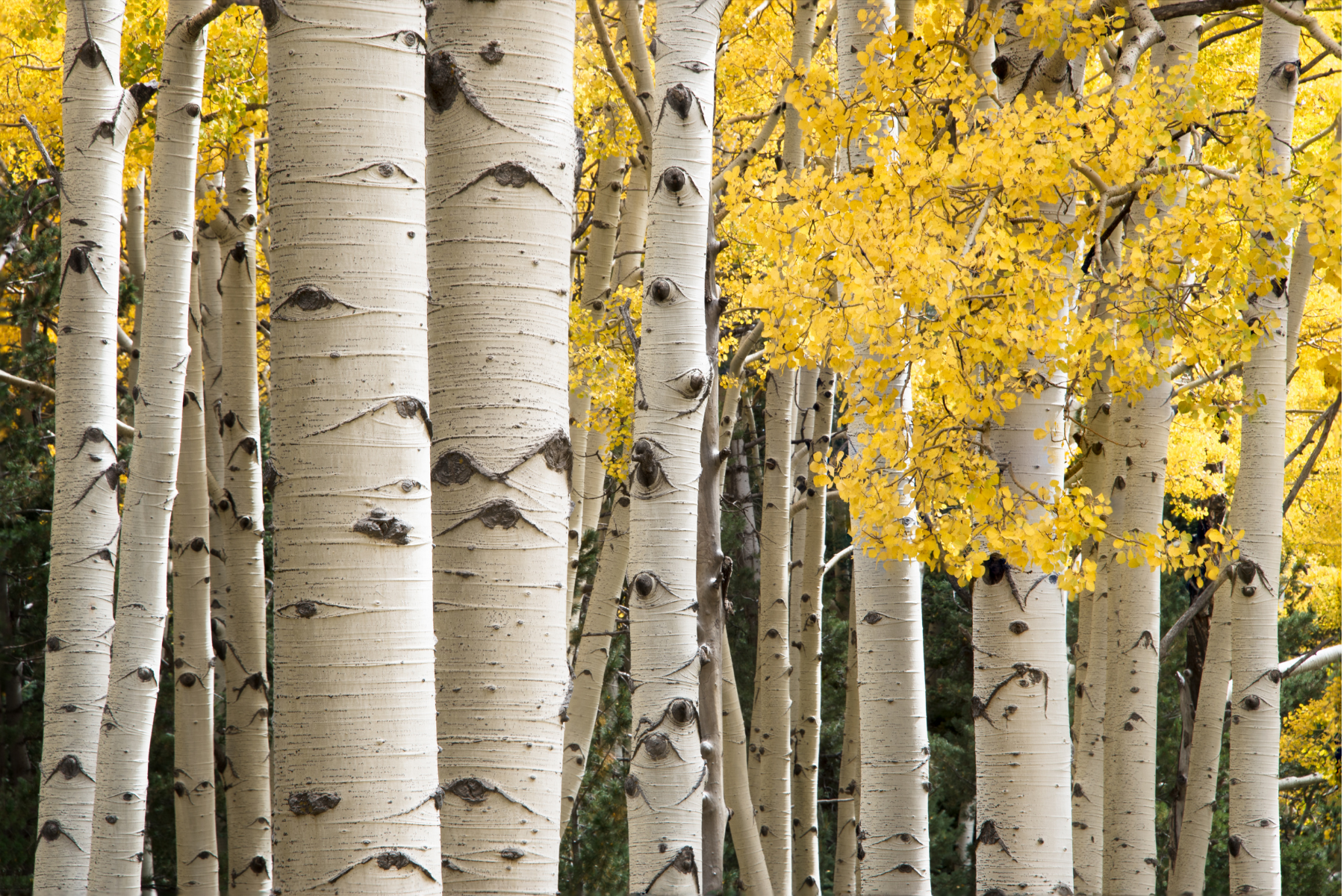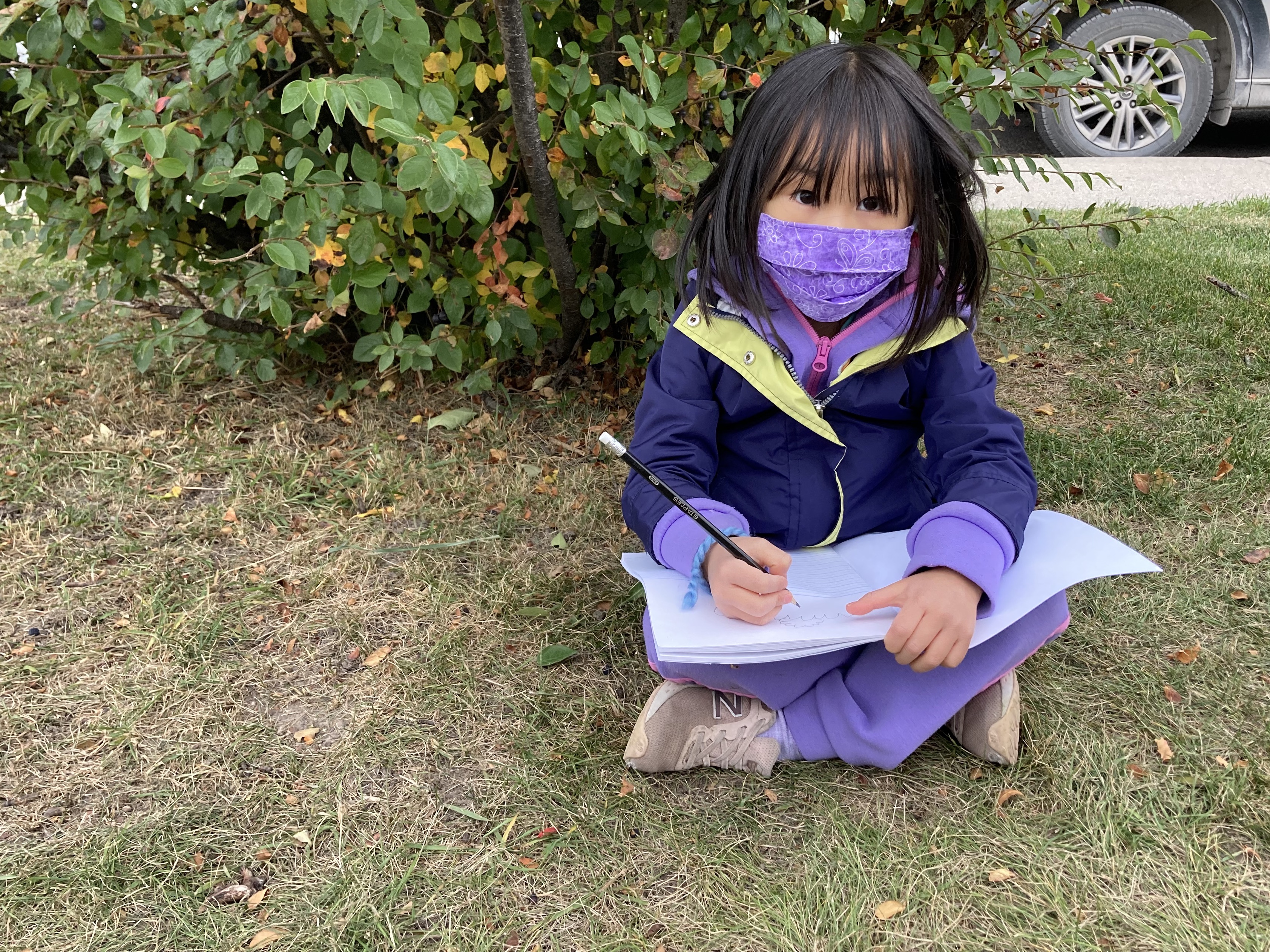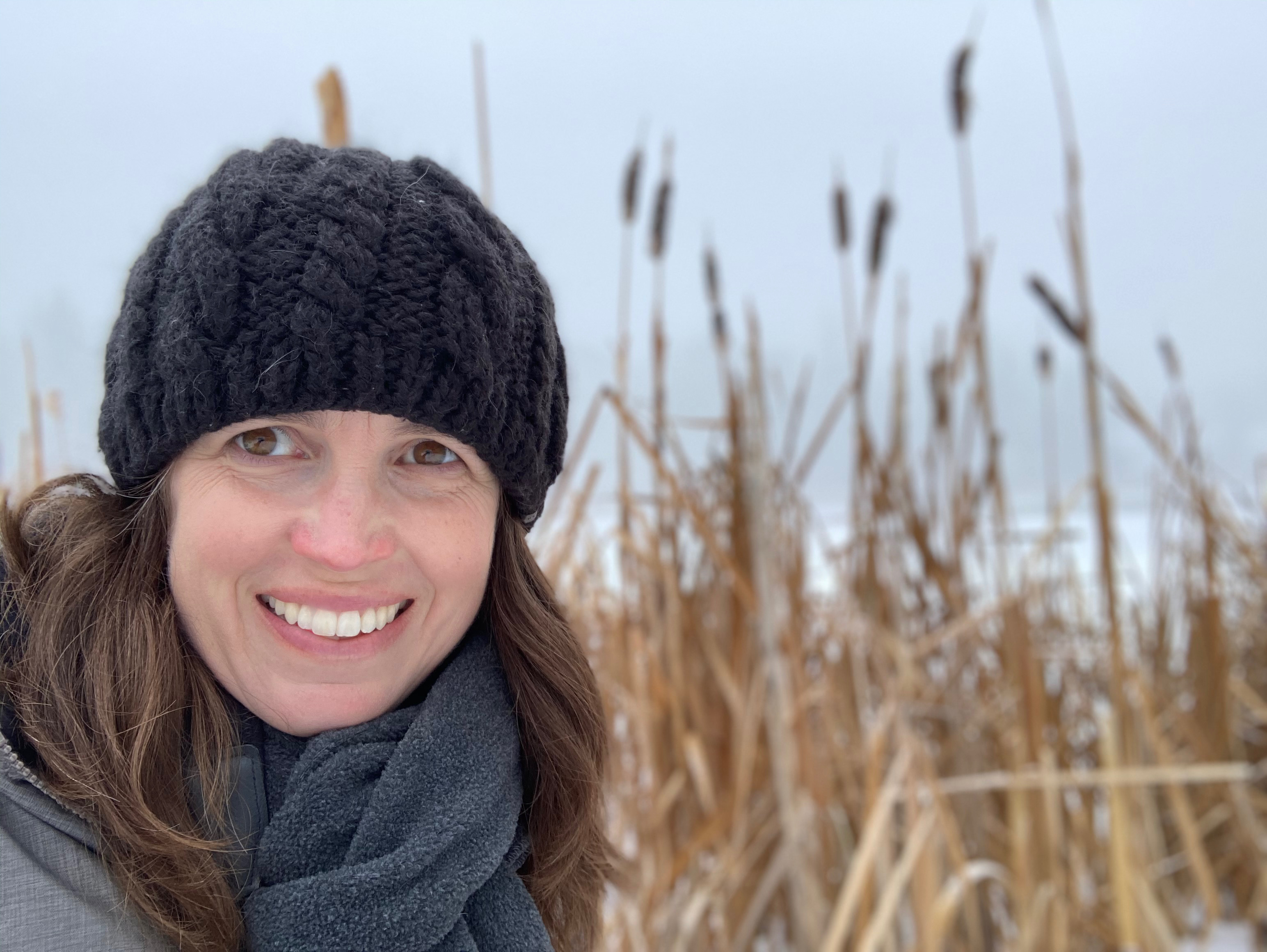
The place where we teach is more than just a backdrop. It is living land we can feel a connection to. This connection can be supported by establishing a place bonding or sit spot practice.
With its ever-changing array of sights, sounds, smells, and sensations, the natural world invites us to slow down and pay attention. By establishing a sit spot practice with your students, you will be offering them the space, time, and guidance that is needed to learn to attend deeply. With this kind of attention comes curiosity, wonder, creativity, and insight. All qualities that will help them along their learning journey.

Sit spots involve taking time to connect to a particular place on a regular basis. In addition to providing students with practice in paying attention, the sit spot offers a chance to develop and reflect on a growing relationship to place.
You may be wondering how sit spots can work when the only “nature” available to your students in the schoolyard, is a field of grass, which for most of the year, is covered by trampled-down snow. It may take a little imagination and encouragement, but you will be surprised and delighted by what your students notice when given the chance. What colour is the sky today? What shape is that cloud? Why is that bird flying over there? Why was my shadow shorter last time? With change being constant outdoors, there is always something to notice and wonder about.
You may be concerned about how you can establish a sit spot routine with your students when winter-like conditions persist for at least 7 out of the 10 months of the school year. It is a challenge! Still, here in Calgary, where we get more hours of sunshine than any other city in Canada, as well as some reprieve in the form of chinook winds in the winter, there may be more pleasant moments available outdoors than you imagine. Stretch yourself and your students beyond what you may have thought possible and try see if you can get outside every month of the year.
Getting Started with Sit Spots
Within a pre-determined boundary, send students out to find their own special solo spot in the schoolyard. You may want to read these instructions before they set out:
You may have to remind students that “it’s not about the quality of the spot, it’s about the quality of the attention within it” (Coyote's Guide). Don’t be deterred if it is difficult for them to choose. Here is some wise advice from Coyote's Guide: “it is amazing what terrible wailing and lamentation go on in the beginning as each individual tries to find the perfect spot. In the end if all our kinder guidance fails, we advise, ‘If you can’t be with the one you love, love the one you’re with’”.
Before they settle into their chosen spot, remind them that they will need to be far enough apart from one another to avoid distractions.
At the Sit Spot
Paying Attention
Can you invite your students simply to be for a few minutes without having to do anything at all? Can they be given the permission simply to sit and let their attention be drawn to what they are sensing around them?
Journalling
After a few minutes of taking in the sights, sounds, smells, and sensations of their spot, you can invite them to open up their journals and respond to their experience. It can be helpful to paste the following prompt into the front of their journals:
Step 1:
Open up your senses.
What do you hear?
What do you smell?
What do you see?
What do you feel?
Step 2:
Open up your journal.
Write about what you noticed. Or draw a picture.
Use descriptive words.
Write a poem.
Draw your feelings.
This is your time and your journal.
You decide.
It will be a joy to witness how their ability to pay attention and respond to what they're noticing grows throughout the year. The journal can become:
A springboard for further inquiry inside the classroom
A seedbed for creative writing projects, and
A spark for artistic expression.
You may also offer a more specific sit spot prompt to encourage reflection about a particular topic or theme, as well as to offer some variety to their experience. Here are some examples:
Find something that doesn't change
What does morning smell like?
How am I part of this place?
Sketch the best view from here
Invite your students to write the specific prompt into their journals before heading off to their sit spots.
Finish with Gratitude

We receive many gifts from the land; it is important to acknowledge that by giving back in some way. Before leaving their sit spots, encourage your students to offer gratitude in the form of a poem, a bow, or a whispered ‘thank you’. This will help to instill in them a sense of reciprocity – to always give something back in return.
Practical Considerations
Timing
The more often you take students outside for sit spots, the more comfortable they will become with the practice. You may begin with just a few minutes and work your way up. You will know best how much time your students need or can handle. To make things easier and more efficient, connect sit spot time to recess or to the start or end of the school day when students are already dressed for the outdoors.
Staying Comfortable
No one can have a good experience at their sit spot if they are too cold. Keep an eye on the hourly weather forecast and try to avoid the coldest or windiest time of day. Encourage students to dress in layers. The more practice they get in sitting outside, the more likely they will be to come prepared. See other tips for staying comfortable in the outdoors here.
Staying Dry
Invest in a classroom set of sit pads. These can be as simple as a newspaper stuffed into a plastic grocery bag or an inexpensive camping mat cut into smaller pieces. Or, if it is in your budget, a purpose-made sit pad for the outdoors will increase your students’ comfort. Encourage students to keep their journals up and away from the snow or otherwise wet ground. If you have a classroom set of clipboards, students can clip their journals onto the board, and cover them up with a plastic sheet. As for writing tools, pencils are more reliable than pens for writing outdoors.
An Invitation
Before trying sit spots out with your students, you might try it for yourself in your own neighbourhood. See what magic awaits when you find your own special spot. Our founder, Stephanie, spent a year connecting to nature in her Calgary neighbourhood. You can read her place bonding story here.

Reference
Young, J., Haas, E., & McGown, E. (2010). Coyote’s guide to connecting with nature (2nd ed.). OWLLink Media.

